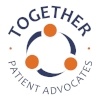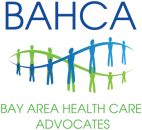
On April 5, 2021 the federal government is expected to mandate immediate patient access to their electronic clinical notes. Many medical systems are already releasing these notes to your electronic healthcare portal in preparation for this mandate. As a result, at no cost, you will have access to these records:
- Consultation notes
- Discharge summary notes
- History and physical
- Imaging narratives
- Laboratory report narratives
- Pathology report narratives
- Procedure notes
- Progress notes
This law is intended to make healthcare more transparent to you. But there are pros and cons to consider.
What are the Pros and Cons of Immediate Access?
Pros
- You have the opportunity to review information for accuracy and correct it when necessary.
- Notes can help you understand what your diagnoses are.
- You can share this information with other members of your healthcare team.
- Notes can remind you about steps of which you should be doing.
Cons
- Clinical notes are written in medical language, which may be difficult to understand or be easily misunderstood.
- Some test results or notes can be anxiety producing or confusing.
- Providers fear an onslaught of emails and phone calls asking for clarifications on notes that patients read.
- The realization that patients will have immediate access to notes is leading some physicians to simplify their notes; this may have unintended consequences of weakening the communication between the members of your medical team.
Because most patients aren't trained in reading clinical notes, access can lead to questions and potential complications. If you read the notes, what should you look for? What if you don't see a lab or test result? How quickly should your doctor respond to your questions? Here are some guidelines to help you with those questions and others.
What is a Clinical Note?
Clinical notes are just another word to describe the physician's notes regarding your care. They are written to accomplish several goals: the physician records what she did during your visit for her own reference, to justify insurance reimbursement, and to communicate with other doctors. These notes historically were not intended to be a form of communication with patients. As a result, they are written in medical jargon, which some patients may find confusing and frustrating to read.
For example, I've been contacted by clients who were offended by what they read in the physician note. One client was distressed that the doctor had diagnosed her with "morbid obesity" as she felt this term to be judgmental. In a clinical note, "obesity" and "morbid obesity" are simply medical definitions and are part of the clinical exam. Obesity is clinically defined as a Body Mass Index (BMI) over 30; morbid obesity is a BMI over 40.
Another client was angry that his medical note referenced a historical detail because he thought the inclusion of this detail meant the physician was biased against him. In fact, this detail was the direct cause of the patient’s medical problem and was important to include to communicate this to the rest of his team as it pertained to his diagnosis and treatment. Prior to my involvement, numerous emails were sent to the doctor and lawsuits were threatened by the client because he (reasonably) did not understand this connection. A simple conversation between us was able to resolve this conflict for the client.
Other aspects of the note may be similarly misinterpreted. When reading clinical notes, remember this is a medical communication intended to be read by other physicians.
What should you look for if you are reading your records?
- Accuracy of Recorded Medical History: Some patients are inclined to argue with every bit of mis-recorded data in the note; e.g. "I had two slices of pizza for lunch, not spaghetti" or "My mom died of ovarian cancer at the age of 68 in 1992, not in 1995.” These are not significant differences that warrant correction.
On the other hand, if the note states that you have diarrhea but no abdominal pains and no bloody stools and you are having the latter two symptoms, this would be something to contact your doctor about as these symptoms may change management of your illness. Before contacting your doctor to correct information, ask yourself how this information will impact your care. If it will have a significant impact, consider emailing your doctor the correct information. Or if a more involved discussion is needed, consider a follow up appointment with her.
- Medication History: Most electronic medical records include the option to request correction of inaccurate medications. You portal should have a button you can press to request that a medication you are not taking be removed, update the dose if it is incorrect, or add a medication that is not listed. These notations will be reviewed and updated at your next medical interaction.
- Diagnoses: You may find diagnoses that you’re not aware you have. Occasionally, these will be incorrect and will need to be updated. Often, though, I find that clients are unaware they have chronic kidney disease or a heart abnormality, for example. One client did not know they had cancer. The diagnoses that your doctor records in your medical history/problem list are important diagnoses of which you do need to be aware. Consider scheduling a visit with your doctor to review and better understand these diagnoses if you discover diagnoses of which you were unaware.
- Plan: All too often clients leave the exam room and find themselves unaware of or having forgotten important parts of their doctor’s plans. Studies show that patients remember 50% of information relayed during a medical appointment, and only 50% of that information is remembered accurately! A detailed after-visit-summary can help prompt you to do these additional steps. Personally, when I review my notes, I find some of my notes include the information that my specialist “always” tells patients to do (clinicians can easily add frequently repeated parts of notes with a simple click), but didn’t have time to tell me about during our appointment. This is usually helpful information and prompts me to modify my actions.
- Lab Results: Lab results are now being released to patients at the same time they are released to the doctor. While it can be nice to get your results quickly, there are some unintended consequences of which you should be aware and a few steps you can take to improve this process.
- When your doctor orders your lab tests, ask when and how you'll receive abnormal results from her. Most doctors act on urgent results immediately and save their responses to minor abnormalities for when they have time to "catch up." Most clinicians aren't given time in their day to respond to labs or emails; instead these tasks are saved for the end of day, or are a "fun" weekend task. If you know your doctor will respond within 2 weeks to mildly abnormal results, you can set worrying about those aside. Make a note to yourself, however, to ensure you've received this information. See my post Is No News Good News? for further considerations.
- I like to get my annual labs checked the week prior to my annual exam so that we can review my lab results at the appointment.
- Confusing results
- Sometimes "positive" is bad news and "negative" is good news.
- Small variations from normal range are often not clinically significant and can be simple lab error. See how your doctor responds before worrying about these abnormalities.
- Most results include a link to read medically accurate information about the test that was run.
- Generally, it's helpful if you can wait to see how your doctor responds. If you haven't received more information in the agreed upon amount of time, reach out to her via email/phone. If there are multiple abnormalities or a longer discussion you wish to have about the results, consider scheduling a follow-up appointment to review these with your doctor.
- Cancer Results: Results of testing for cancer are now released automatically to the patient. Previously, all cancer related tests were held from patient review for a few days to allow the doctor time to communicate these results directly to the patient. This allowed for this frightening news to be given in a caring and supportive manner. Now, those results are released directly to the patient when they result. If the results are normal, this can save some anxious waiting for results. If abnormal, this can be a difficult way in which to receive them: you may be home alone when you learn you have cancer, or in the middle of a difficult work day. Consider how you want to receive this information before checking the results.
- When your doctor orders your lab tests, ask when and how you'll receive abnormal results from her. Most doctors act on urgent results immediately and save their responses to minor abnormalities for when they have time to "catch up." Most clinicians aren't given time in their day to respond to labs or emails; instead these tasks are saved for the end of day, or are a "fun" weekend task. If you know your doctor will respond within 2 weeks to mildly abnormal results, you can set worrying about those aside. Make a note to yourself, however, to ensure you've received this information. See my post Is No News Good News? for further considerations.
Share information with other medical team members
One benefit of electronic access is the ability to easily share information with other members of your medical team. This can save unnecessary duplicate testing which saves time and money. I’ve been known to open a result from Doctor Smith when I’m in Specialist Jones’ office so that they can review those necessary results. Ideally, electronic systems communicate with each other or results are sent to consultations beforehand, but in reality, this isn’t always the case.
Refer to these guidelines when reading your clinical notes. Let me know if you have any questions or additional suggestions.



.gif?width=200&name=NAHAC-Member-Badge200x112+(1).gif)


